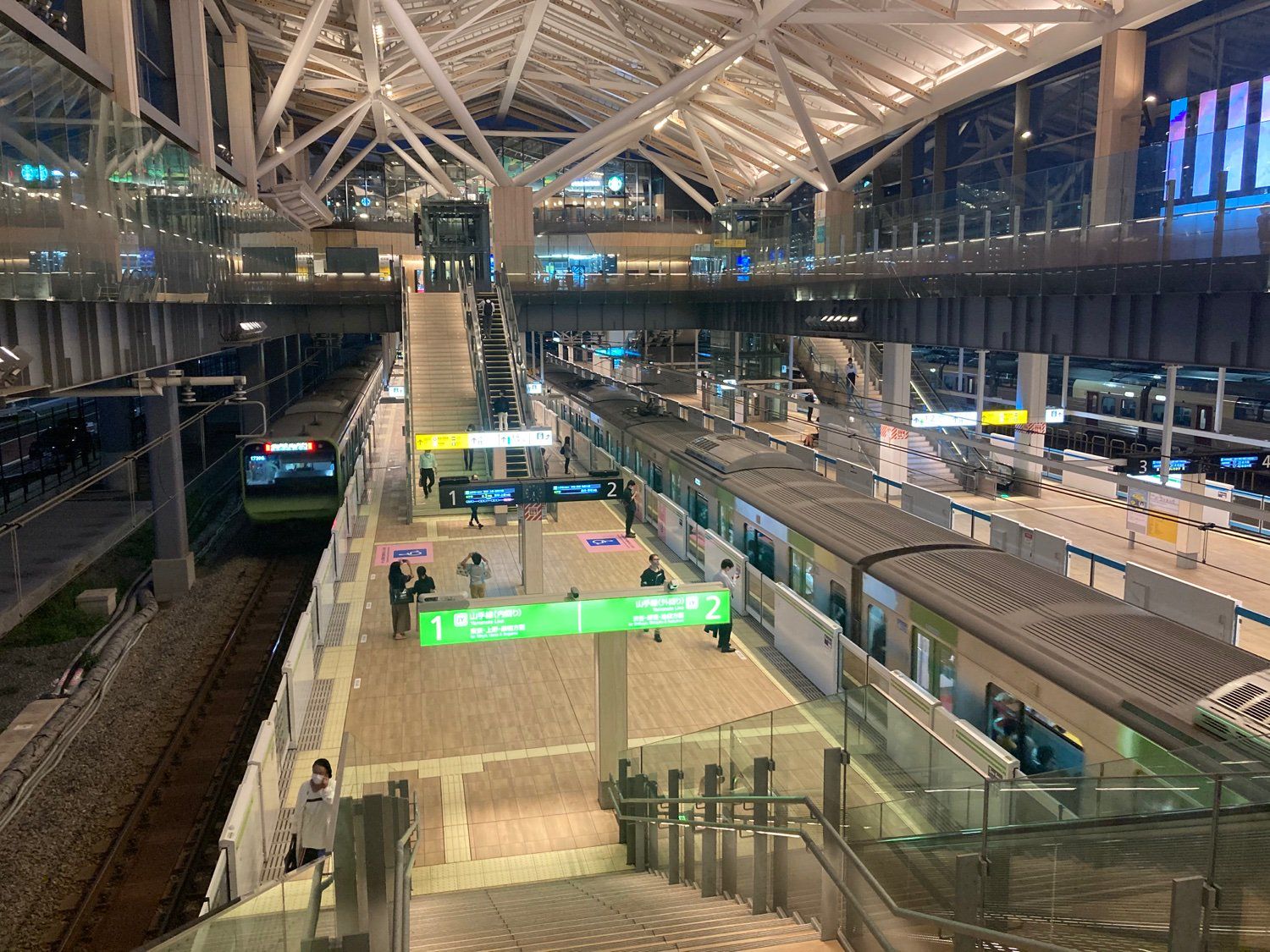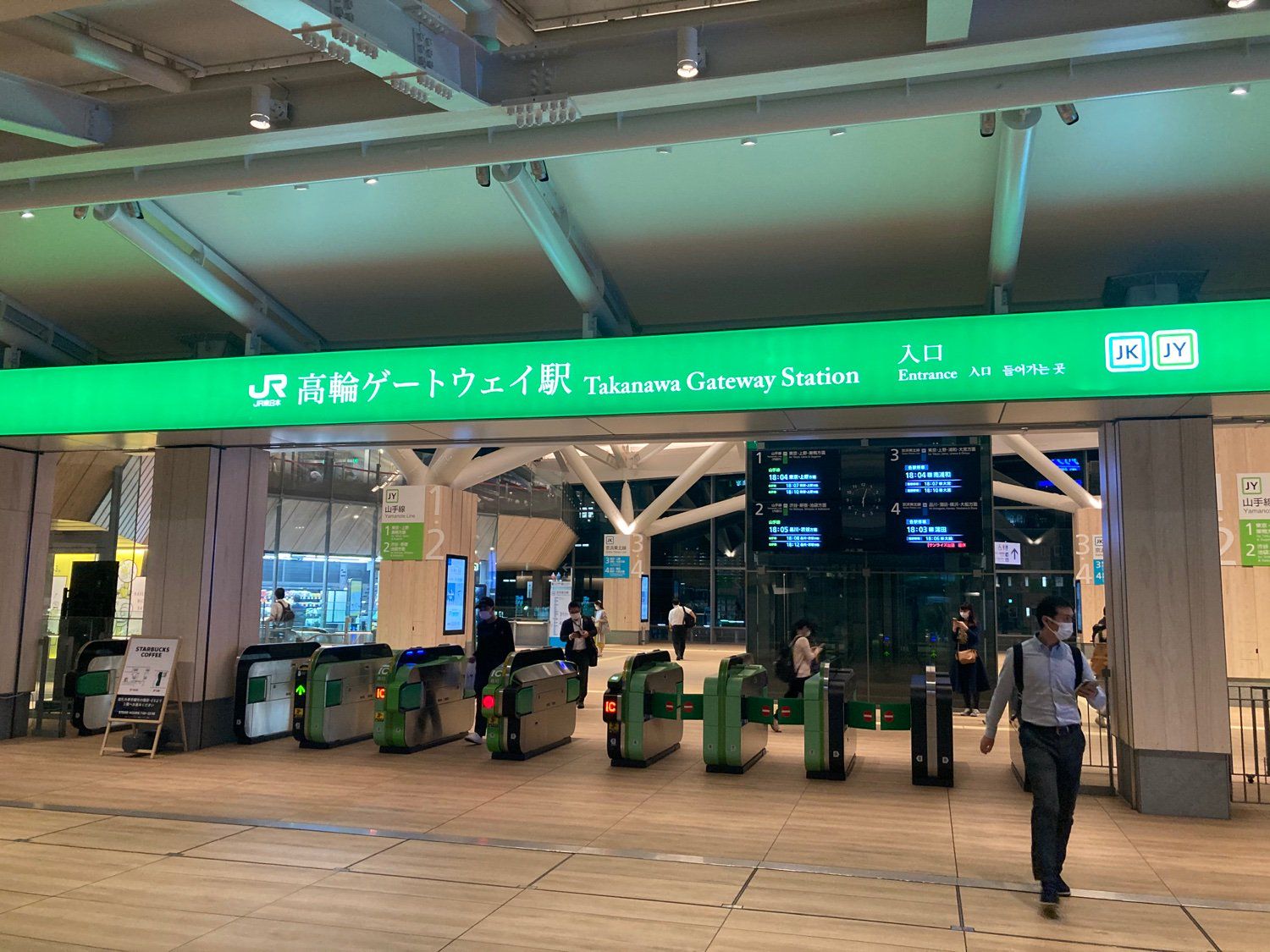from aeronmelon@lemmy.world to japanesetrains@lemmy.world on 26 Sep 2024 15:44
https://lemmy.world/post/20211026
Above: On the entrance level of Takanawa Gateway Station looking across the open area above the platform level as passengers board a Yamanote Line train.
Let’s try something different.
In 2014, JR East announced that they would build a new station on an area of the existing Tamachi Depot in southern Tokyo that would service the Yamanote Line and the Keihin-Tohoku Line. It was the first new station to be built on the Yamanote Line since 1971 and the first to be built on the Keihin-Tohoku Line since 2000. Takanawa Gateway Station (高輪ゲートウェイ駅) began construction in 2017 and was to be opened in advance of the 2020 Tokyo Olympics. Even though the station opened on schedule, it began service 10 days prior the 2020 Olympics being postponed to 2021 due to the worsening COVID-19 situation worldwide.

An opposing view of tracks 1 & 2 on the platform level below. A counter-clockwise Yamanote Line train is departing (left) just as a clockwise Yamanote Line train arrives (right).
While the station opened to commuters in early 2020, facilities inside the station and adjoined buildings outside the station continued to be worked on all the way through to 2024. In 2025, the south ticket gate is scheduled to open to the public which will mark the completion of construction on the station.

The north ticket gate of Takanawa Gateway Station. Inside and to the left, shopping and dining. Inside and to the right, access to the platform level for the two lines. Directly behind, walkway to shopping centers and condominiums that were still being constructed at the time the photo was taken.
The majority of the station is built above ground, hovering over the tracks and their platforms. The center of the station’s entrance level is open to the ground below which allows most people inside the ticket gate to see the trains on all four tracks coming and going with ease. The entire station is shielded from the weather by a steel latticework roof suspended high above the entrance level. Above the entrance is a smaller level with shops and restaurants.

If you look closely, you can see that wood has been integrated into the support beams of the roof. Takanawa Gateway Station is built in almost the same area that the Takanawa Great Wooden Gate once stood as the southern entrance to pre-Tokyo Edo. In a way, this station takes over the duty of ushering people from the south into the city, so the subtle woodwork seems to be a nod to that connection. Otherwise, the entire station is steel and glass.
Outside the station, the elevated entrance leads to additional elevated walkways that connect the station to nearby shopping centers, offices, and residential buildings. The land around the station, which was largely devoid of people, is being repurposed as dense inner-city living and commerce.

The rest of Tamachi Depot that continues to operate as a depot. The Tokaido Shinkansen passes beside Takanawa Gateway Station between Shinagawa and Tamachi Stations. That menacing Bond villain-looking building belongs to NTT docomo (a major Japanese telecom).
The name Takanawa Gateway was chosen by JR after holding a public poll in 2018 asking the people of Japan was the station should be called. The results of that poll showed the names Takanawa, Shibaura, and Shibahama winning the most votes. However, JR unilaterally chose the name Takanawa Gateway despite it being towards the bottom of the list of contenders. This caused public criticism over why the vote was held in the first place and an attempt to petition JR to use one of the winning names instead. JR did not alter their decision, defending their choice as a name that best reflected the future development of the area (Takanawa as the area, and Gateway as a “Gateway to Edo” referencing the Takanawa Great Wooden Gate which was the old southern entrance to the city of Edo).

A giant video wall on the far end of the entrance level. It plays a looping presentation of the history of this area of Tokyo, as well as the history of local rail transport. Additionally it shows the local weather and other information.
Considering this station is relatively small and only serves two lines with no connections (not even to very close by Sengakuji Station on the Toei Asakusa Line), it is unusually stylized and very expensive (the cost to build the station is unknown). Its high quality nature makes sense as the surrounding area is being completely redeveloped to bring in new residents and tourists to the tune of 500 billion yen. Useful if you live or work here, but most people are just going to see it from inside the train car while on their way to Shinagawa or Tokyo.
All pictures taken by me in 2020. Part of my Stations series of posts.

threaded - newest